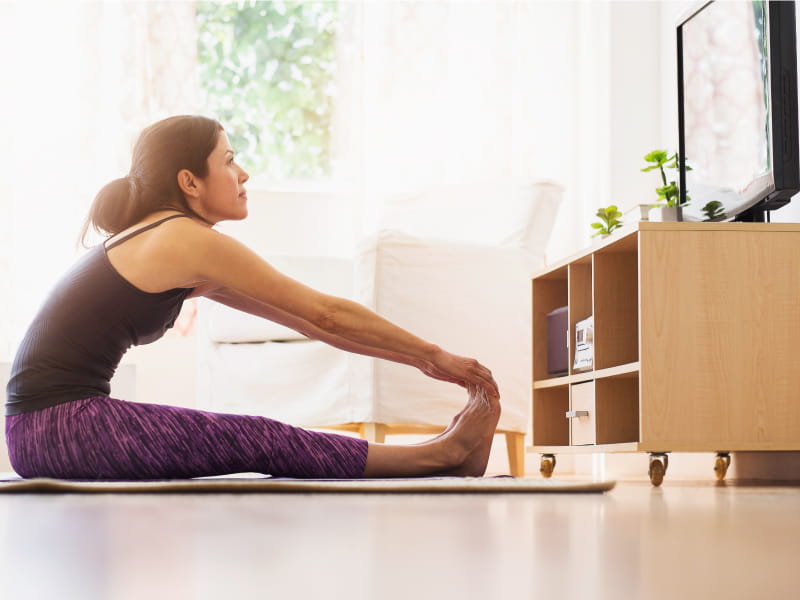The do's and don'ts of social interaction during a pandemic
By American Heart Association News

Across the nation, Americans find themselves in varying degrees of social isolation as part of a coordinated effort to try to slow the spread of the new coronavirus. Some cities are in full lockdown. Others are asking people to simply remain socially distant.
But navigating this new world of social limitations can be confusing. What should – and shouldn't – people be doing?
That depends on your level of isolation, said Arthur Caplan, director of the Division of Medical Ethics at New York University Grossman School of Medicine.
The most restrictive level, said Caplan, is quarantine – when a person is ill or known to have been exposed to the virus and must be completely separated from others with no social interactions outside the home.
"If you have a partner or a child and can't be completely separated in the home, at least you split the living space and keep your distance," he said.
Being under quarantine is similar to being in lockdown, a restriction some governments are using when localities experience severely high levels of infection. In lockdown, or with a "shelter in place" order, venturing out for other than government-allowed reasons could carry a penalty such as a fine or arrest. The directives differ from place to place, but generally allow residents to take care of essential health and safety tasks, such as buying groceries, medicines, and even going for a run or walking the dog.
Residents also may voluntarily shelter in place, a type of self-isolation encouraged for those who are medically vulnerable, such as people 65 and older and those with weak immune systems, heart disease, diabetes or lung disease. As the numbers of people confirmed to be infected increase, a growing number of states and localities are asking all residents to self-isolate to slow contagion.
The new coronavirus causes COVID-19, a respiratory illness with symptoms such as a cough, fever and, in more severe cases, difficulty breathing. The American Heart Association recently released a statement advising special caution for older people with coronary heart disease or high blood pressure because they may be more likely than others to be infected by the virus and have more severe complications.
At a minimum, all Americans are being asked to practice social distancing, which means remaining at least 6 feet apart from others and limiting the number of direct interactions with other people.
"I think the guiding principle is that we're trying to reduce the spread of the virus and one way to do that is to isolate ourselves to reduce the chance of giving it to someone else," said Wayne Rosamond, an epidemiology professor at the University of North Carolina Gillings School of Public Health.
As a general rule, he said, that means reducing contact with other people as well as reducing contact with anything someone else may have touched.
But with the kids home from school and the entire family cooped up together, questions arise over what people should and shouldn't be doing with their time.
Don't visit older parents, friends or neighbors, Caplan advises. "They are at high risk. Don't bring the kids there to see them. You just don't know whether you're infected or not. Call them up. FaceTime them. Use Skype. But do not visit."
If you are venturing out with the kids, be careful about where you go and what they touch, Rosamond said. Ask yourself, "What things in the environment could other people have touched or possibly coughed on. Creating space between people is important but so is being aware of the surroundings and what you and your kids are touching."
The National Institutes of Health warns the virus can live on surfaces for up to several days. "Kids like to touch things, they put everything in their mouths," said Caplan. "You have to be very careful when you take them anywhere."
Neither should you let your kids invite friends inside for a playdate, Caplan said. "They can see their friends outside if you keep them apart. But you have to watch them. No wrestling. Don't let them jump on top of each other."
The federal government also is asking that all non-essential dental or medical appointments be postponed during this time. Not only would such visits potentially expose people to the virus in medical offices, waiting rooms or on public transportation, but "they could be diverting resources that potentially would be needed to care for coronavirus patients," Caplan said. Medical workers from a wide range of practices are being asked to help care for the influx of patients.
So, what can you do?
It's important to check with local and state authorities to find out what restrictions have been issued for your area.
In general, government health agencies suggest taking a walk, going for a run or even doing yardwork if you want to get out of the house. Just stay 6 feet away from anyone else.
Many gyms and yoga studios, which have been closing down, are providing online video classes people can do at home.
"You have to get creative," said Rosamond. "It is important to move and not to be sedentary. Get sleep, eat right and get up and be active. Staying healthy mentally and physically during this time is essential."
If you really need to get out, activities like family camping trips are still OK, Caplan said, "as long as you go alone or with members of your household. But don't go to a campsite with 300 people. That's defeating the purpose."
Editor's note: Because of the rapidly evolving events surrounding the coronavirus, the facts and advice presented in this story may have changed since publication. Visit Heart.org for the latest coverage, and check with the Centers for Disease Control and Prevention and local health officials for the most recent guidance.
If you have questions or comments about this story, please email [email protected].





